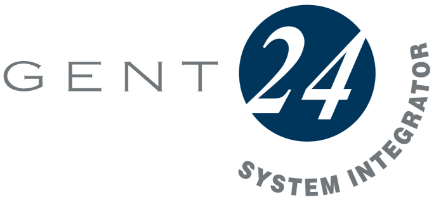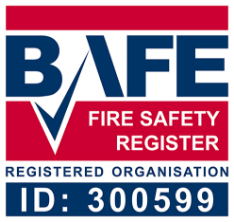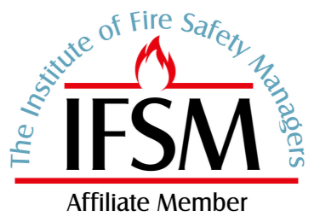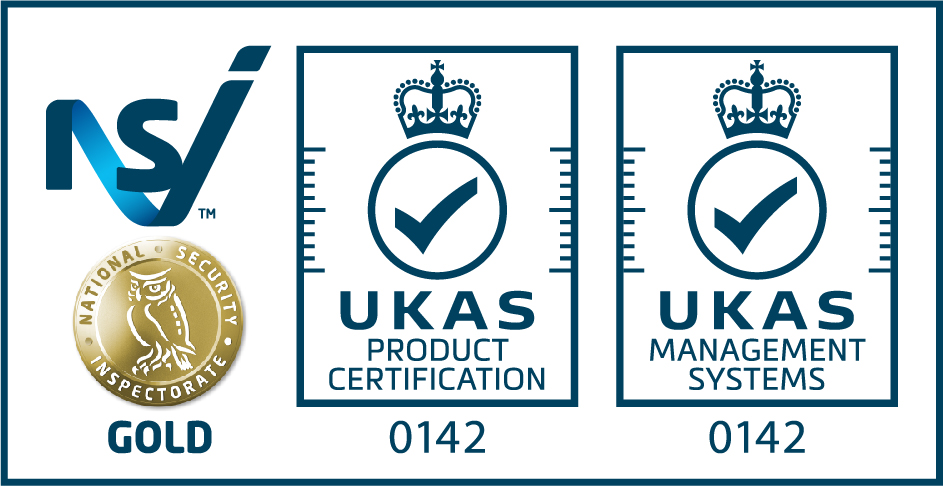Fire safety is becoming a top priority for every building owner as we approach 2025. With evolving risks and more complex structures, the consequences of not having the right type of fire system can be devastating for businesses, public institutions, and residential complexes.
This article will guide you through the 7 essential types of fire system options you need to consider for 2025. We will explore cutting-edge detection, advanced suppression, integrated alarms, and the importance of compliance.
By understanding new technologies and legal requirements, you can protect your people, assets, and reputation. Let us help you make the right choice to stay secure and compliant.
Why Upgrading Fire Systems is Critical in 2025
Upgrading your type of fire system is more important than ever in 2025. The landscape of fire safety is changing rapidly, with new regulations, technologies, and risks on the horizon. Businesses, public institutions, and residential complexes must adapt to safeguard lives, assets, and legal standing.
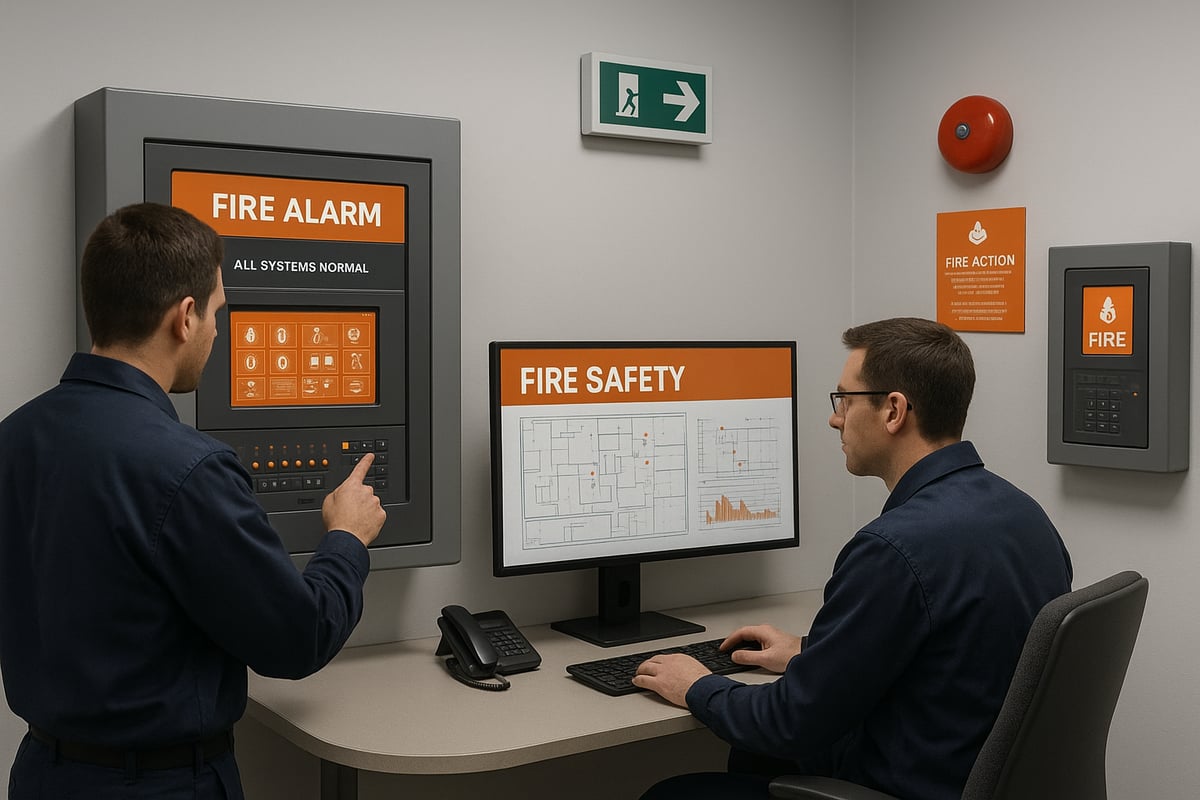
Evolving Fire Safety Regulations and Compliance
The regulatory landscape for every type of fire system has shifted significantly for 2025. Updates to the Fire Safety Order and BS 5839-1:2017 have brought stricter requirements for system installation, maintenance, and record-keeping. Building owners and managers now face greater accountability, with over 22,000 non-domestic fires reported in the UK in 2023 underscoring the urgent need for robust systems.
Non-compliance can result in severe penalties, including fines and prosecution. Recent enforcement actions have targeted organisations failing to meet standards. For a detailed overview of these changes, see the UK fire safety regulation updates 2025.
Impact of Emerging Technologies on Fire Protection
The integration of IoT, smart sensors, and AI is revolutionising every type of fire system installed in modern buildings. These advancements enable quicker detection, remote monitoring, and predictive maintenance, minimising downtime and improving response times.
Case studies from commercial deployments show that smart fire systems can provide cost savings through early intervention and reduced false alarms. Predictive analytics help facilities teams to anticipate and resolve issues before they escalate, enhancing safety outcomes and operational efficiency.
The Need for Customised Fire System Solutions
No single type of fire system suits every environment. Offices, schools, hospitals, and warehouses each present unique fire risks and operational challenges. A server room, for example, may require gas suppression, while a warehouse might need a robust sprinkler system.
Risk assessments are essential to determine the best approach, ensuring that solutions are tailored to the building’s specific needs. Customisation not only improves safety but also ensures compliance with the latest regulations and optimises lifecycle costs.
7 Essential Type of Fire System Options for 2025
Choosing the right type of fire system is crucial for safeguarding people, property, and business continuity in 2025. With advancements in technology and evolving regulations, understanding each type of fire system helps ensure compliance, safety, and peace of mind. Let us explore the seven essential options you should consider for robust fire protection.

1. Addressable Fire Alarm Systems
Addressable fire alarm systems represent a cutting-edge type of fire system, offering precise location tracking for every device within a network. Unlike conventional systems, each detector and call point has its own unique address, allowing first responders to identify the exact source of an alarm instantly.
This accuracy means faster response times and fewer false alarms, which is especially valuable in complex environments such as hospitals and large office buildings. Addressable systems are fully compliant with BS 5839-1 and can be scaled or integrated into larger building management systems with ease.
Research shows that installing this type of fire system can reduce response times by up to 30 percent compared to traditional alternatives, making them a smart investment for future-ready safety.
2. Wireless Fire Alarm Systems
Wireless fire alarm systems are an innovative type of fire system designed for flexibility and rapid deployment. Using radio communication between detectors, control panels, and sounders, they eliminate the need for extensive cabling.
This approach is ideal for heritage sites, temporary structures, or buildings with complex layouts where wiring would be disruptive or impossible. Recent advancements in battery life and wireless signal reliability have made these systems highly dependable.
For example, retrofitting listed buildings with a wireless type of fire system preserves the original fabric while meeting modern safety standards. Regular testing remains essential to ensure ongoing compliance and performance.
3. Fire Suppression Systems
A fire suppression system is a proactive type of fire system that goes beyond detection, actively extinguishing or containing fire at its source. Main options include water sprinklers, gas suppression (like FM-200), and foam-based systems.
Each is tailored to specific risks: gas suppression is perfect for server rooms, wet chemical systems protect commercial kitchens, and traditional sprinklers suit warehouses. Integrating fire suppression with alarms enables automatic activation during an incident.
According to industry data, sprinkler-based type of fire system solutions can reduce fire damage by up to 60 percent. For a deeper dive into these options, see this Fire suppression solutions overview. Regular inspection and maintenance are vital to ensure effectiveness.
4. Smoke Detection and Aspiration Systems
Modern smoke detection and aspiration systems offer an advanced type of fire system for early warning and rapid response. These include optical, ionisation, and multi-sensor detectors, as well as aspirating smoke detection (ASD) systems.
ASD is highly sensitive, capable of detecting smoke at concentrations as low as 0.01 percent obscuration per metre, making it ideal for environments like museums, cleanrooms, and telecom facilities. This type of fire system helps reduce false alarms and ensures reliable, ongoing protection.
Maintenance is straightforward, with regular cleaning and calibration recommended to maintain peak performance and compliance with safety standards.
5. Emergency Lighting and Exit Signage Systems
Emergency lighting and exit signage form a critical type of fire system, ensuring safe evacuation routes during an emergency. Systems include maintained, non-maintained, and central battery setups, all designed to keep pathways illuminated if mains power fails.
Legal requirements under BS 5266-1 mandate clear escape route lighting for premises such as shopping centres and hotels. Integration with alarms allows automatic activation when a fire is detected.
Routine testing of this type of fire system is necessary to guarantee reliability and legal compliance, supporting efficient and safe building evacuations.
6. Voice Alarm and Public Address Systems
Voice alarm and public address systems are a sophisticated type of fire system designed to provide clear, calm instructions during a fire incident. Unlike bells or sirens, voice alarms reduce panic and confusion by delivering spoken messages.
These systems support zoning, so different areas receive tailored instructions, and they can offer multilingual messaging for diverse environments like airports, hospitals, and stadiums. Integration with detection systems ensures messages trigger automatically when needed.
Compliant with BS 5839-8, this type of fire system is vital for large public venues where orderly evacuation is essential for safety.
7. Passive Fire Protection Systems
Passive fire protection is a foundational type of fire system, focused on containing fires and slowing their spread. This includes fire doors, fire-resistant walls, barriers, and compartmentation.
Legal requirements for fire-stopping and compartmentation help ensure that structures like hotels and schools maintain safe evacuation times. These measures can double the time available for occupants to escape during an emergency.
Regular inspection and maintenance of this type of fire system are essential, supporting both legal compliance and effective fire risk management in all types of properties.
Integrating Fire Systems for Maximum Protection
Integrating every type of fire system is essential for creating a robust, unified approach to fire safety in 2025. Today’s buildings require more than standalone alarms or sprinklers. True protection comes from seamless coordination, ensuring that detection, suppression, and evacuation work together for maximum safety.
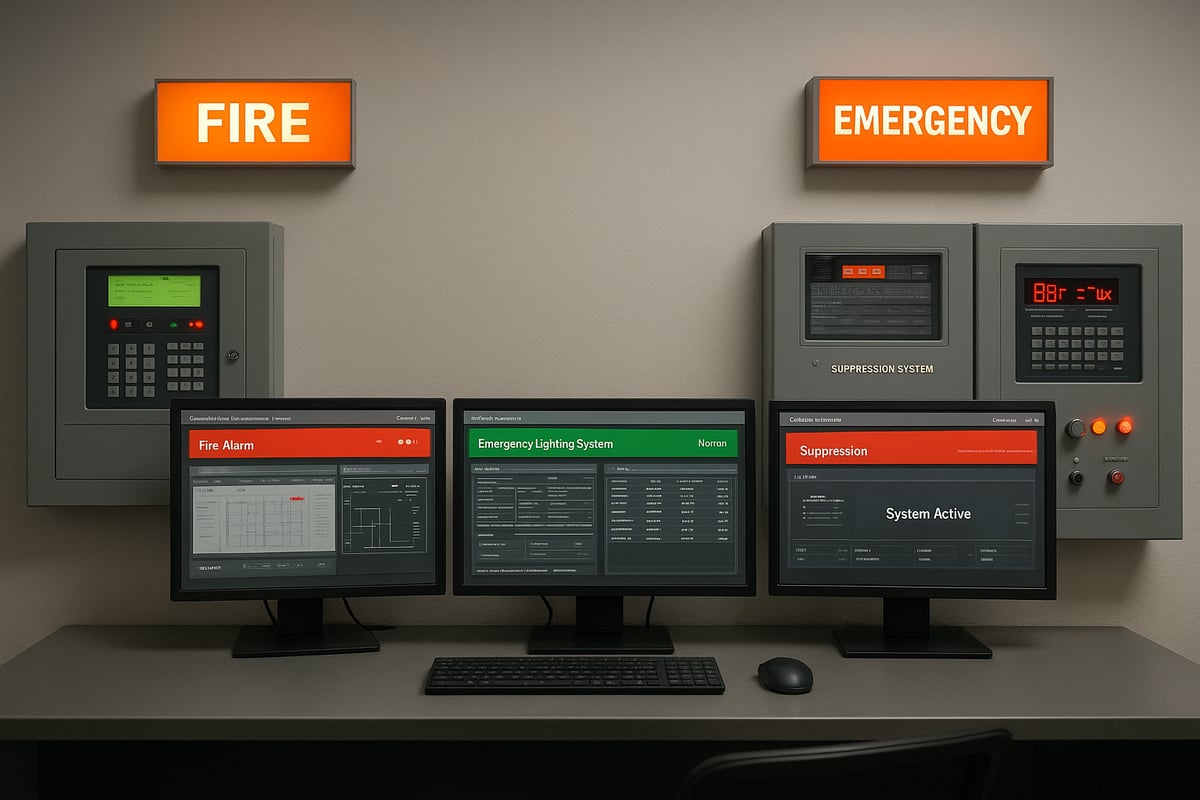
Benefits of System Integration
Integrating each type of fire system transforms isolated safety measures into a comprehensive network. When alarms, suppression, and emergency lighting work in harmony, the entire building benefits from faster, more coordinated responses.
For example, a fire alarm can automatically trigger suppression systems and illuminate escape routes, reducing confusion and panic. This interconnected approach supports compliance, minimises manual errors, and streamlines evacuations.
Advanced integration also enables central control and monitoring. According to Fire alarm system types, modern systems are designed for compatibility, allowing easy expansion and smarter management. With every type of fire system communicating, incident reports are more accurate and decision-making is faster.
Smart Monitoring and Remote Management
Smart monitoring is revolutionising how each type of fire system is managed. Cloud-based platforms provide 24/7 oversight, delivering instant alerts and supporting predictive maintenance.
Facilities managers can now track system status, receive fault notifications, and schedule tests remotely. This reduces the risk of undetected faults and ensures compliance with safety regulations. For example, a retail chain using centralised monitoring can identify and address issues across multiple sites without delay.
Remote diagnostics also enable quick response to any type of fire system malfunction, limiting downtime and enhancing overall building safety. The result is a more reliable, proactive fire protection strategy.
Future-Proofing with Scalable Solutions
Every type of fire system should be scalable to adapt to changing building needs. Modular designs allow for easy upgrades, such as adding new detectors or expanding coverage without complex rewiring.
Software updates further extend system lifespan, keeping protection measures current as technology evolves. This approach ensures that investments remain valuable as regulations and risks change.
Future-proofing means your building can accommodate new tenants, expanded operations, or updated compliance requirements. Choosing a flexible type of fire system offers long-term cost savings and peace of mind.
Choosing the Right Fire System for Your Building
Selecting the right type of fire system for your premises is a process that demands methodical planning and expert insight. The safety of occupants, property, and business continuity all hinge on making informed choices at each stage.

Conducting a Comprehensive Fire Risk Assessment
Before determining the most suitable type of fire system, a thorough fire risk assessment is essential. This assessment identifies potential hazards, evaluates existing controls, and clarifies what protection measures are required. Compliance with the Regulatory Reform (Fire Safety) Order 2005 means every building owner must regularly review and document these findings.
The process typically involves:
- Identifying sources of ignition, fuel, and oxygen
- Evaluating who might be at risk and how
- Assessing the adequacy of current fire precautions
- Recording significant findings and action plans
For detailed guidance, consider this resource on comprehensive fire risk assessment. Tailoring your approach to the unique needs of an office block versus a manufacturing plant demonstrates the importance of this first step.
Matching System Types to Building Needs
Every building has distinct requirements, so matching the correct type of fire system to your environment is critical. Factors such as occupancy, building use, and structural layout all influence the right solution. For example, a server room may benefit from a gas suppression system, while a public venue might require a voice alarm for effective evacuation.
Specialist consultants can help analyse these variables and recommend systems that align with legal requirements and operational goals. Selecting the right type of fire system ensures both compliance and optimal safety for everyone on site.
Here is a quick comparison:
| Building Type | Recommended Fire System |
|---|---|
| Server Room | Gas Suppression |
| Warehouse | Sprinkler System |
| School | Addressable Fire Alarm, Voice Alarm |
| Hotel | Emergency Lighting, Exit Signage |
Ensuring Ongoing Compliance and Maintenance
After installation, maintaining your chosen type of fire system is vital for long-term safety and legal compliance. Building owners are responsible for regular testing, inspection, and record-keeping, as outlined in UK fire safety regulations. Neglecting maintenance can lead to invalid insurance, legal penalties, and increased risk to life and property.
Best practices include:
- Scheduling periodic system checks
- Keeping accurate service records
- Engaging certified professionals for inspections
By prioritising the upkeep of your type of fire system, you safeguard your assets and provide peace of mind to everyone who uses your building.
As you consider the best way to protect your people and property in 2025, it’s clear that a tailored fire system is no longer just a recommendation—it’s essential. Whether you’re navigating new regulations, adopting emerging technologies, or ensuring your system suits your unique building, expert advice can make all the difference. At Logic Fire and Security, we understand that every site has its own challenges and opportunities for safer, smarter protection. If you’d like specific guidance or want to see how our experience could benefit your premises, why not Get a Free Site Survey?


